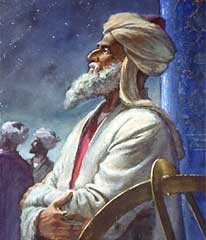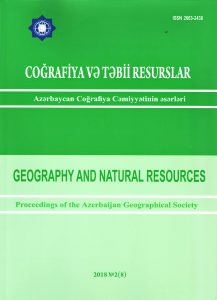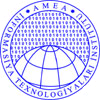THE SCIENTIFIC WORK OF SCIENTIST IN THE LIMELIGHTThe majority of Nasiraddin Tusi’s works on arithmetic, astronomy, geometry and trigonometry has been drawing close attention of scientific community owing to translations into Greek, Latin and other languages since the 14thcentury.
“Collection of calculations” of the scientist, who was popular for his scientific works, was translated into Greek in Constantinople and then was taken to Italy. It is impossible to deny importance of his scientific achievements. It proves that, Tusi’s “Memories about astronomy” and “Treatise on complete quadrilateral” were translated into Latin and were important sources for scientists. Professor Habibulla Mammadbayli wrote: “Tusi wrote in the introduction of “Treatise on complete quadrilateral” that, continuous quantities could be understood only by means of discrete quantities. After 362 years, well-known scientist of geometry Cavaleri wrote in his letter to Galileo: “I think that, the principle of quantities is common for both continuous and discrete quantities””.1 Let’s see the example proving that, Tusi’s mathematical and astronomical works had spread in Europe: “There was following theorem in the 67th part of the well-known Pole scientist N. Copernicus’s “Rotation of celestial spheres”: A small circle moves inside another one and touches it. That circle’s radius is equal to half of the first circle’s radius. The second circle’s radius will outline the first circle’s diameter during the movement. That theorem was first proved by Nasiraddin Tusi and explained in “Memories about astronomy””.2 It proves that, N. Tusi’s “Memories about astronomy” and “Treatise on complete quadrilateral” were translated into Latin and were important sources for scientists. Most of his works about geometry, astronomy and trigonometry were translated into Latin by scientists of Western Europe in XIV century and published in XVI-XVII centuries. According to the German scientist Henry Zutter, though churchmen were against development of relations with the East in the middle ages, they organized translation of “infidel Muslim” scientists’ scientific works into Latin with great pleasure. Most eastern scientists’ works on astronomy, mathematics, medicine and philosophy were translated from Arabic into Latin. The Soviet astronomer, academician M. F. Subbotin, who was considered great expert in the field of spherical mechanics, wrote about Tusi’s astronomical works: “Nasiraddin Tusi knew that, main essence of astronomy doesn’t consist of the “world system” only. It included collection of observation materials and determination of events. That’s why he founded an observatory and organized long-term systematic observations on the Sun, Moon and planets. On the other hand, the scientist made “Zij-i Ilkhani” with the help of scientists, which were invited to the observatory. Those tables were his main achievements. Nasiraddin realized the program, which would be realized by Ticho Brage after 300 years, when he made mentioned tables in accordance with special observations and analyze of Ptolemy’s mathematical theory. It proves that, Nasiraddin was aware of the science’s demands. Nasiraddin Tusi could cope with all difficult works owing to his great energy and talent as an organizer”.3 Almost all well-known scientists of middle ages used Nasiraddin Tusi’s scientific works and made important discoveries owing to those works. According to investigations, though Nairaddin Tusi’s “Book of collection of calculations with a board and land” written in 1265 hadn’t been learned by historians of mathematics very well, it was used by eastern scientists of the middle ages. Hasan Nishapuri’s “The Sun of arithmetic” written at the beginning of XIV century and Giyasaddin Kashi’s “The key to arithmetic” written at the beginning of XV century based on “Collection of calculations”. As Giyasaddin’s work had been analyzed by European researchers, everybody thought that, the method of finding root of all degrees was described in Giyasaddin Kashi’s “The key to arithmetic”.  Giyasaddin Kashi (1380-1429) Soviet historians of mathematics did a lot of things in this field after the middle of XX century. Translation of XI chapter of N. Tusi’s “Collection of calculations” was published in XV edition of “Researches on the history of mathematics” in 1963 in Moscow. After it, it became clear that, methods of finding root were described in Tusi’s above mentioned work 160 years before Giyasaddin Kashi. All these facts prove that, Tusi’s scientific works were very significant and his achievements weren’t refreshed by other scientists at least during 100 years. (Continue of article: “The scientific works of Nasiraddin Tusi”) Best regards, the member of Azerbaijan Geographic Society, President grant holder on literature, laureate of the “Golden pen” award, writer/ investigator Ramiz Daniz email: [email protected], [email protected] 1 H. C. Məmmədbəyli. Mühəmməd Nəsirəddin Tusi. Bakı, “Gənclik”, 1980. səh. 135-136
2 Ф. Г. Максудов, Г. Дж. Мамедбейли. Мухаммед Насирэддин Туси. Баку, «Гянджлик», 1981. стр.28
3 М. Ф. Субботин. Работы Мухаммеда Насирэддина по теории движения Солнца и планет. «Известия» АН Азерб. ССР. № 5, 1951. стр. 57
 27359 27359 |
|








 AZ
AZ EN
EN RU
RU








